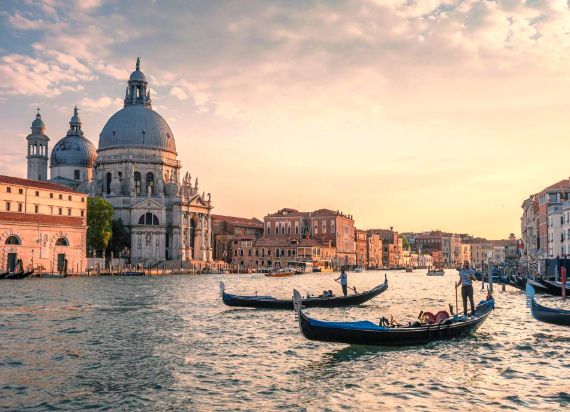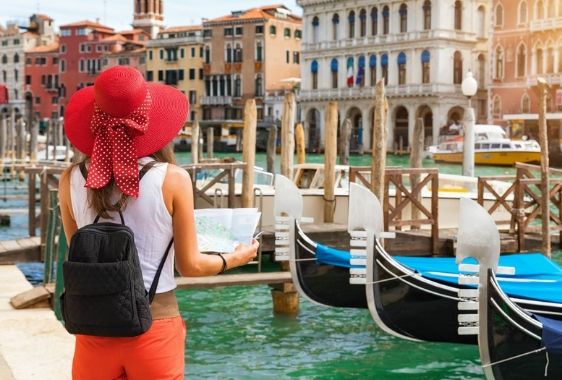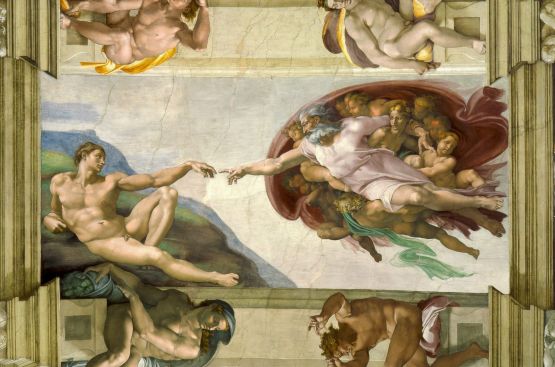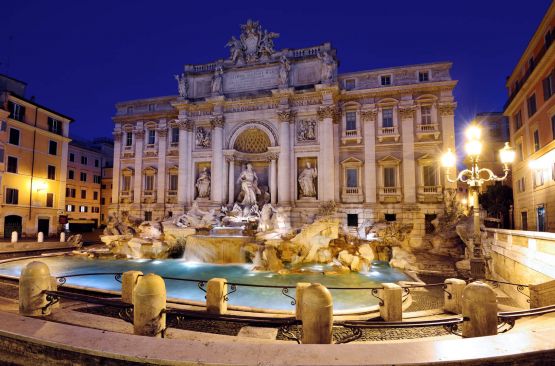Driving in Italy is probably only advisable for those coming from neighbouring European countries; for those who are spending a considerable length of time in Italy; or for travellers who are concentrating their vacation one particular region or relatively small geographical area such as people renting villas in the countryside. The ever-increasing fuel costs, toll roads, high parking fees and other hassles make using public transport or selecting tours a more viable option.
The system of roads is broken down into Autostrada's (toll-fee highways) which most people would use when travelling long distances. As an example, from Florence to Venice the toll-fee would be around 20€ ( approximately 29US), and would take about 3-hours to drive in good traffic. The autostrada highways are well equipped with plenty of service areas on route where you stop for low-cost meals and to purchase local speciality goods of the particular region you are driving through. The Autostrada are constantly patrolled by HELP cars that assist motorists.
The speed limit on the Autostrada, unless otherwise posted is usually 130 km/hour ( 78 mph). The majority of the time these roads provide excellent driving surfaces, although be aware of Bologna and the road works which make the section of road between Bologna & Florence particularly dangerous. Also note there are bottlenecks around particular junctions where the Autostrada traffic joins local traffic and the results can be quite horrendous.
Particular bad areas are in and around big cities like Milan, Bologna and Rome. Although, the A4 approaching Mestre-Venice in either direction can have lines of traffic several kilometres long. Try to avoid driving on the Autostrada at rush-hours 8 - 10 in the morning and 6 - 8 in the evening hours. And try to avoid altogether driving in Italy in August when it seems like the whole of Italy is on the road taking their annual vacations.
Super-Strada's are like county roads, semi-highways that are usually single-lane roads that were the old highways of Italy. Surface of the road varies greatly, and on these routes you'll probably enjoy more scenery, but as they pass through communities the driving time is usually slower. These roads are free of charge and in some cases they may actually be quicker than taking an Autostrada. From Pisa to Florence it's actually quicker taking the Super-Strada (signposted SS plus the particular number) than it's taking the Florence to Pisa Autostrada.
Regular roads in Italy offer a varied mixture of challenges from uneven and poorly maintained surfaces, to hairpin bends around the coastal roads and the mountains of Italy, as well as the challenges brought by the Italian drivers themselves. Italians do crazy things when they get behind the steering wheel, they can certainly be aggressive and if they all drove that way it would make it a lot easier to drive in Italy. But, Italians are also superstitious people and some are completely the opposite being over-cautious drivers who might stop in the middle of a highway to make sure they have read a sign correctly.
Scenic routes such as wine-roads, coastal routes are well indicated generally with brown coloured signs. Italian signs do not automatically follow each other, so if your following indications to a particular place and then all-of-a-sudden you arrive at a junction with no indications continue straight ahead (something obvious to an Italian, but not the rest of us!).
Fuel costs are constantly increasing in Italy, one of the most expensive countries in Europe after Holland. So as you drive around check-out fuel prices, sometimes the fuel prices on the Autostrada are considerably higher than the petrol (gas stations) on the regular roads. A US gallon of petrol will cost around 6.68€ ( 9.28 US). The cars might be more fuel efficient in Europe, but these make travelling by car not much more cheaper than by rail. In fact, two people travelling by High-Speed trains from Florence to Venice would pay around 5€ more for two of them than by travelling by car, without considering the cost of parking.
Parking in Italy typifies the laws and regulations of the country. Some Italians follow these laws and others completely ignore them, while the Italian police seem to make up their mind as they go along. In Rome, where parking just doesn't exist, it has become almost acceptable to park your car anywhere there is space off the open road. Do this in Milan and your car will be towed straightaway.
Always try to follow the rules when driving in Italy, because even though the Italians might get away with things as a foreigner you have no excuse! Remember when you enter cities to have your route planned ahead of time including parking options, while you should avoid trying to find parking space in small villages and especially hill towns where parking is limited and the streets are narrow and confusing and full of pedestrians!
When renting cars, unless you are planning to arrive and depart from airports with the rented car, arrange to pick your vehicle up at a downtown location to avoid the extra expense and time involved to return to airports to collect or deliver your vehicle.
Driving can be fun in Italy, you just need to come prepared with plenty of maps to assist your route finding capabilities as well as plenty of patience! Many car rental companies offer satellite navigator's for an extra fee which may make sense if you're planning to do a lot of driving in Italy. Try to avoid using the car-horn as it's actually banned in many areas of towns and cities, and in certain areas of Italy it might instil "road-rage" in your fellow drivers.











